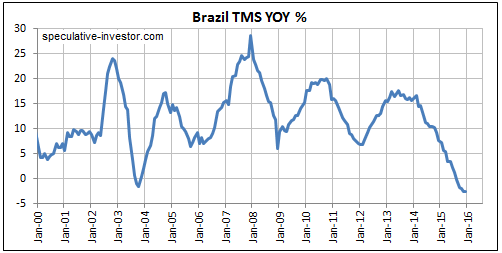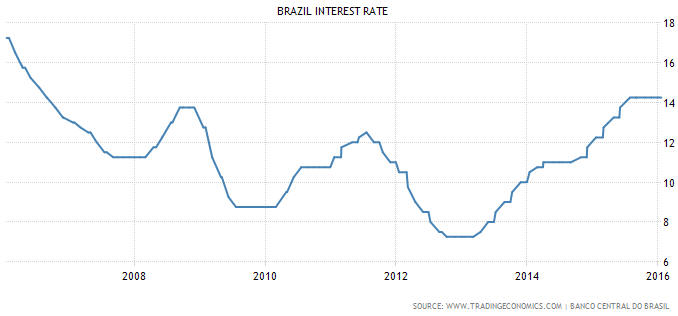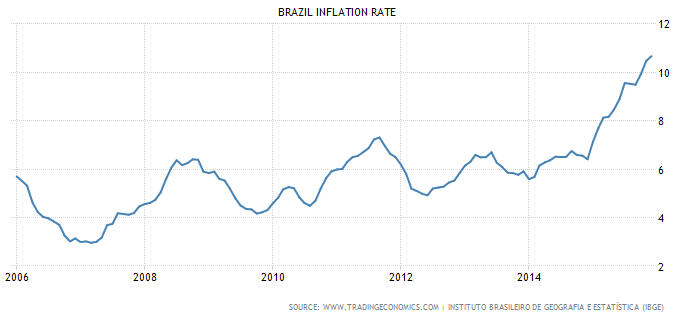Here are 21 rules/guidelines that I try to follow when speculating in the stock market. I don’t always follow them and in such cases I usually end up regretting it.
1. Every investment must pass the “Sleep Test”
An investment should not be so large that you lie awake at night worrying about it. To be a successful speculator or investor you must be able to remain relaxed and objective. An uncomfortably large investment or trade, although offering a potentially great return, can jeopardise your ability to remain objective and can thus lead to mistakes.
2. Avoid the emotions of hope, greed and fear
Hope is often associated with unrealistic expectations and causes an investor to cling to a losing position, magnifying the losses unnecessarily. Greed causes an investor to buy at the wrong time, such as near the peak of a rally, and to risk excessive amounts of money. Fear prevents an investor from buying at a time when the market presents the best opportunities to buy and prompts him to sell at the worst possible time (at the bottom of a correction or bear market).
3. A corollary to Rule 2 is: Treat your investing/trading as a business, not a Vegas-style gamble
This involves:
a) Checking your emotions at the door. You won’t be able to make objective decisions if you get excited by profits and/or depressed by losses.
b) Following an entry and exit plan for every stock you buy.
c) Not caring what happens to the price of a stock after you sell it. If you constantly worry that a stock will rocket higher after you sell then you will never be able to exit at an appropriate time.
d) Ignoring the cheerleaders. The cheerleaders (those commentators who become progressively more bullish the higher the price goes and who focus exclusively on the potential for huge rewards as if buying into the market right now were a sure path to great riches) tend to bring out the gambling spirit in their followers.
4. Use a disciplined risk-management approach at all times
It is difficult to own-up to a mistake. There is also usually the fear that if I sell now for a small loss the price will immediately rebound and I will have lost the opportunity to profit from the rise. After all, “hope springs eternal” and that stock that keeps dropping like a stone will one day soar like an eagle; all I need to do is be patient.
A systematic approach to risk management, which may or may not include ‘stop losses’, must be used to protect your investment capital. This is a hard lesson to learn and can usually only be learnt the hard way through experience.
5. Minimise the role of luck in your investing by playing a percentage game
Playing a percentage game encompasses the following guidelines:
a) Do not try to make a killing during any given year, but, instead, follow an approach designed to generate above-average returns over several years. In this way you might actually end up making a killing, but be aware that the vast majority of people who set out to get rich quick in the stock market end up a lot poorer.
b) Never plan to buy at the bottom or sell at the top. Instead, plan to buy on those occasions when the reward/risk ratio is high and to not buy, or to sell, on those occasions when it is low.
c) Take some money off the table during periods of extreme strength so you won’t feel pressured to sell during the periodic shakeouts.
d) Do some buying during the severe shakeouts that periodically occur in long-term bull markets. Note, though, that this will usually only be possible from a financial and/or an emotional standpoint if you previously took some profits into strength.
e) Never make whole-scale buy or sell decisions. Instead, scale into positions during weakness and scale out during strength, all the while maintaining exposure to the long-term bull market of the time.
f) Don’t ‘bet the farm’ on any single forecast. Forecasts, regardless of how well thought-out they appear to be, are just opinions, and any opinion can be wrong.
g) Don’t risk a large portion of your capital on any single stock. Regardless of how attractive a stock appears to be, acknowledge the fact that ‘stuff’ sometimes happens even to the best of companies.
6. Do your buying during those times when the fundamentals AND the price action are favourable
The fundamentals are favourable if the current price of the stock is low relative to the value of the underlying business, where the value of the underlying business is detemined by the company’s assets and growth prospects.
Examples of favourable price action include consolidations or basing patterns within longer-term upward trends.
7. Don’t focus on the profit/loss of a trade while the trade is on-going
Thinking about how much money you are making or losing on a trade while the trade is on-going may cause the emotions of fear and/or greed to influence your decisions. Have an exit plan for each stock and continue to monitor the fundamentals and the price action to determine whether to hold or to sell.
8. Make sure your exit plan for a stock is consistent with your entry plan
For example, if favourable price action was your main reason for buying a stock then you should exit if the price action turns unfavourable. In this case a reasonable approach could involve setting a protective stop just below a technical support level. However, if your decision to buy was based primarily on value considerations then it would make no sense to sell simply because the price became lower.
9. Remember that there are no absolute highs or lows
It is often the cheapest stocks that fall the furthest and the most expensive stocks that show the greatest price appreciation. Also, a price level that seems low or high today might appear the opposite in 12 months time.
10. Always maintain a substantial cash balance
You must always be in a position to take advantage of any opportunities that arise and the only way to do this is to always have significant cash reserves.
11. Close an event-based trade as soon as the anticipated event occurs
For example, let’s say a company you follow is about to announce its latest earnings. You expect the company to announce earnings that surprise on the upside and purchase the stock with the aim of taking a profit in the days following the announcement. If the company subsequently announces a result that does not exceed expectations you must immediately sell because the basis for your trade has proven to be false. If, however, the company does announce higher-than-expected earnings then you must sell within a few days of the announcement irrespective of the price action because this was your plan going into the trade. A disciplined approach will prevent short-term trades from becoming unwanted long-term investments.
12. Don’t be stingy when it comes to market information and stock buy/sell prices
The speculative investor does not day-trade and does not enter a position with the aim of taking a quick small profit. The timeframe for a trade will generally range from 1 month to 24 months and the goal will generally be to achieve a return of more than 30%. As such, it makes no sense to hold out for the final few percent when making a purchase or a sale.
Market- or stock-related information that increases your chances of investing/trading success is worth paying for.
13. Be aware that when the public is either extremely bullish or extremely bearish, the risk of a trend change is high
When the vast majority is extremely bullish then almost everyone who is going to buy has already bought and there is only one direction for the market to go, and that’s down. Similarly, when the vast majority is extremely bearish then almost everyone who is going to sell has already sold and there is only one direction for the market to go, and that’s up. Beware, though, that what constitutes a bullish or bearish extreme will differ depending on the long-term trend. For instance, sentiment can become more bullish and stay bullish for longer during a bull market than during a bear market.
14. Be patient
On average, you should not realistically expect to find more than two great opportunities per year to profit from market timing (sometimes there will only be one and there will seldom be more than three). As such, it pays to be patient and to wait for the major market reversals that usually accompany extremes in mass psychology. When these opportunities occur, the speculative investor must be financially prepared (refer to Rule 10) and psychologically prepared (refer to Rule 2) to take full advantage.
15. Remember and learn; don’t regret or blame
Take full responsibility for all of your investment decisions and never fall into the trap of blaming others when things go wrong. Losses are often learning experiences and can actually be money well spent if they prevent you from making the same mistake again, but if your reaction to a loss is to look outside yourself for someone/something to blame then you’ve learnt nothing from the experience and the money was wasted.
16. Keep yourself well-grounded
This encompasses the following:
a) Never complain about losses or brag about profits.
b) When the market is trending strongly higher and your stocks are going up every day remember that you are nowhere near as smart as you think you are; and during the severe corrections when every stock you own appears to be headed towards zero remember that you aren’t as dumb as you feel.
c) Be prepared to change your opinion if the facts change. In other words, don’t become wedded to any stock or to any market view.
d) Don’t act as if the current rally will be the last great money making opportunity. It won’t be.
e) Always keep your mind open to new ideas and analysis/evidence that contradicts your current view of the financial world. Most people are quick to embrace anything that meshes with their existing beliefs and to dismiss anything that contradicts these beliefs, which is why most people never see the signs of a trend change until it is too late.
17. Know the story behind every stock you buy
It is not enough to simply follow the recommendations in any newsletter because even if these recommendations are on-the-mark you won’t be able to buy or to hold in the amidst of a selling panic unless you have the confidence that stems from having a thorough understanding of the story.
18. Know yourself
For example, if you are someone who gets antsy and has trouble sleeping whenever the stocks you own make big moves, then don’t buy volatile stocks. Or if you know you are going to be too busy to fully understand the stories behind individual stocks then allocate most of your stock-market-related capital to ETFs and mutual funds.
19. Never use margin debt
NEVER buy stocks on margin. This is because as soon as you begin using margin debt you become a ‘weak hand’ — someone who would likely be forced to sell in reaction to a sharp price decline, that is, someone who would likely become a forced seller at a time when they should probably be buying.
20. Keep in mind that the ‘market’ does not know or care about your cost basis
When deciding whether to sell, hold or add-to a position in a stock, the price you paid for the stock is irrelevant. The market is under no obligation to raise the price of the stock to the point where you are able to exit at a profit or a reduced loss, and the fact that the price of a stock has fallen a long way from your purchase cost will never be a good reason to continue holding.
When deciding what to do with an existing position it is often helpful to first consider what you would do if you didn’t have the position. For example, if your current position in stock ABC has a market value of X$, think about what you would do if you had X$ of additional cash to invest and no position in stock ABC. In this case, would stock ABC be one of your top choices for investing the X$? If your answer is an unequivocal NO, then why are you continuing to hold the stock?
21. Understand that there is no such thing as “just a paper loss”
A loss is a loss, whether you take it or not. For example, if the price of a stock you own falls by 50%, then at that point you have lost 50% regardless of whether or not you lock-in the loss by selling. To view a loss as being somehow less serious if the position hasn’t yet been closed, or, worse still, to think that you haven’t actually incurred a loss at all until you sell, is both amateurish and financially-hazardous.
 Print This Post
Print This Post




